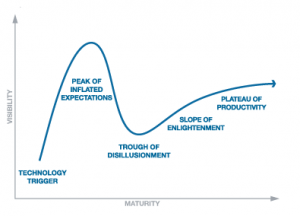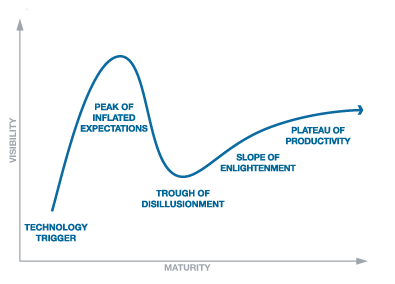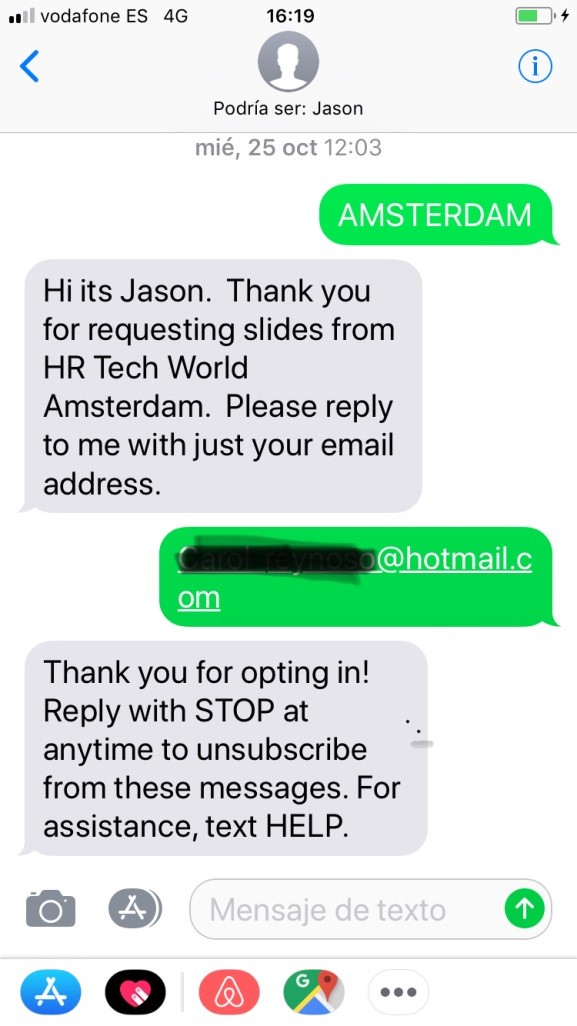3 TIPS FROM HR TECH WORLD
Our world has experienced the greatest revolution—probably since the invention of writing, or even greater than that. Companies are already digitizing or they are fully digitalized and new jobs are here to stay. So, what next now? This is what most of the gurus who attended the last HR Tech World, one of the greatest technology and talent management events in the world, asked themselves, “Yes, we already know that we’re in the digital world. But what should we do now?” Probably this is the greatest unknown in these highly critical times of transition ever in the history of man.
Peter Hinssen, famous entrepreneur and intellectual of the digital world rightly titled his last book, “The Day After Tomorrow: How to survive in times of radical innovation”. In this book, he shows we are reliving the narrative in Charles Dickens’s “Tale of Two Cities” set at the time of the French Revolution and the famous passage lifted out of it, “It was the best of times, it was the worst of times, it was the age of wisdom, it was the age of foolishness, it was the epoch of belief, it was the epoch of incredulity, it was the season of light, it was the season of darkness, it was the spring of hope, it was the winter of despair.”
OH! And WOW!
“Oh!” and “Wow!”, these are the two words we’re constantly exclaiming in this new and unexplored environment, says Peter Hinssen. This couldn’t be closer to reality. It is well known that today, technological advances are ahead of our ability to assimilate, and even more disturbingly, the ability sovereign states have to legislate over them. So in many cases, companies are entering this new world completely in the dark; a journey of exploration that sometimes leads to wonder and other times to error.
In this world, we have also seen how the balance has tilted towards large digital companies that are leading the lists of the top organizations in the world today. A world in which the human beings are also being transformed and digitalized bringing technology into all aspects of their lives, and even into their own being (as seen with the embryonic transhumanist and posthumanist trends so well described in the recent trending essay by the philosopher Luc Ferry, “The transhumanist revolution, how technology and the uberization of the world will transform our lives”).
So anyway, what to do? Two of the main issues that concern digital organizations are innovation and productivity. In such a fast-paced and changing world it is hard to stay ahead in innovation (and often this is precisely what depends on talent). Yet after extensive efforts in investing in digitalization, many companies have found themselves unable to produce significant changes in their production model or to prove the ROI of their investments in technology. Next, I will give some of the main keys to be able to provide long-term consistency in digitalization strategies. To this end, I have synthesized some of the ideas of two of the gurus at the event, the aforementioned Peter Hinssen and Jason Averbook, who is also a consultant and writer specialized in technology applied to organizations.
Before moving on to these ideas, it is interesting to point out that both intellectuals agree that today digital is already a “new normal” and that in fact, these “digital strategies” should no longer be called digital, as digital is already part of the environment. As such, Averbook quoted the CEO, Kay Boycott, who said that “having a digital strategy will soon be as ridiculous as having an electrical strategy.”
Therefore we mustn’t ignore this perspective as a starting point for any strategy.
3 TIPS FOR REMAINING BUOYANT IN THE DIGITAL ERA:
Focus on people and processes: I thought what Jason Averbook calls “The solution equation” very interesting. According to him, a good strategy should focus on processes and people in particular (45% on both respectively) and 10% on technology. The latter is essential, but it must be focused right on facilitating processes between people and flow underneath unobtrusively as an enabler; if a parallel were to be drawn, we could talk about “venous circulation”. So you must have motivated people who understand the vision and the direction to take and who also understand the “future of work”. The processes must be oriented and aligned to the achievement of well-defined business goals designed with the user in mind. For our part, technologists must be especially clear about the relevance of the process, and above all that the process goes before the implementation of any technology.
Plan for the “day after tomorrow”: Both authors agreed on the importance of anticipation. As we said, the world is changing at such a speed that it is better to plan for the future, not for the day after. If we observe the typical “hype cycle” technology adoption curve (“an inflated-expectations cycle is a graphic representation of the maturity, adoption and social application of a specific technology”), we see that at the beginning there is always a “hype” or trigger moment. This might be the point where many companies find themselves at the onset of their digitization process. If you notice, next comes a moment of decline. Then it would become important to mitigate this decline as much as possible and to start working on the ensuing descending phases from the initial peak moments, by preparing in advance.
The user experience is equal to transaction + interaction: “I’ve learned that people will forget what you said, people will forget what you did, but people will never forget how you made them feel,” Maya Angelou, quoted by Averbook. Today, the user experience (UX) is practically everything in any digital organization. This discipline that combines sociology, design and technology—and whose experts are increasingly in demand in companies worldwide—is the basis for successful communication and strategy between the company and the user. Averbook stated in his talk that user experience was equal to transaction + interaction. And apparently, far more effort has been made for the now in the first part of the equation, “transaction”, than in “interaction”, which is where true user engagement and interest are generated. To empirically demonstrate the importance of the latter, by getting us involved and making us “interact”, the intellectual did a little practical exercise during the talk which I liked a lot. He asked us to send a message with the word AMSTERDAM to a telephone number. Then you received a personalized message on your mobile saying “Hi, I’m Jason. Thank you for asking me for the HR Tech World ppt. Please reply to me with your e-mail.” After sending the e-mail, you received another thank you message notifying that you could unsubscribe from these messages at any time and also indicating that with the word HELP you could request help.
This exercise turned out to be very effective. All the attendees received a personalized message from the guru on our mobile phone, so we felt more involved in the rest of his presentation. Moreover, by having the ppt of the conference on our phone we could follow it much better and without the stress of taking photos to keep the information of what was happening. What’s more, we have to highlight the transparency by providing the fictitious option to unsubscribe (obviously we were not going to receive more messages). Well done!
{{cta(‘6a313d20-b8f9-4fab-90c5-8bcc6f360cb3’)}}








